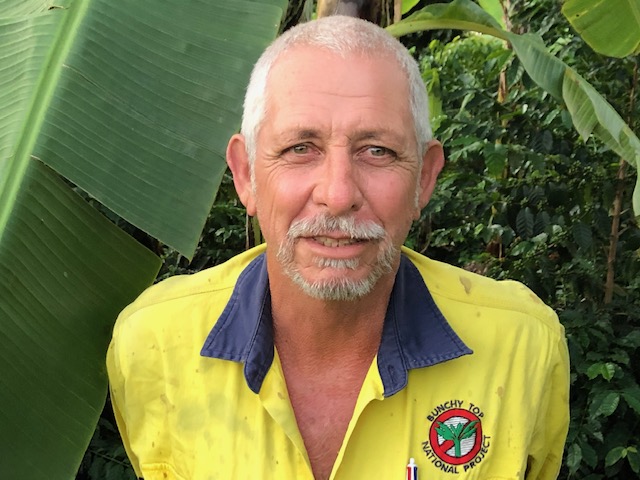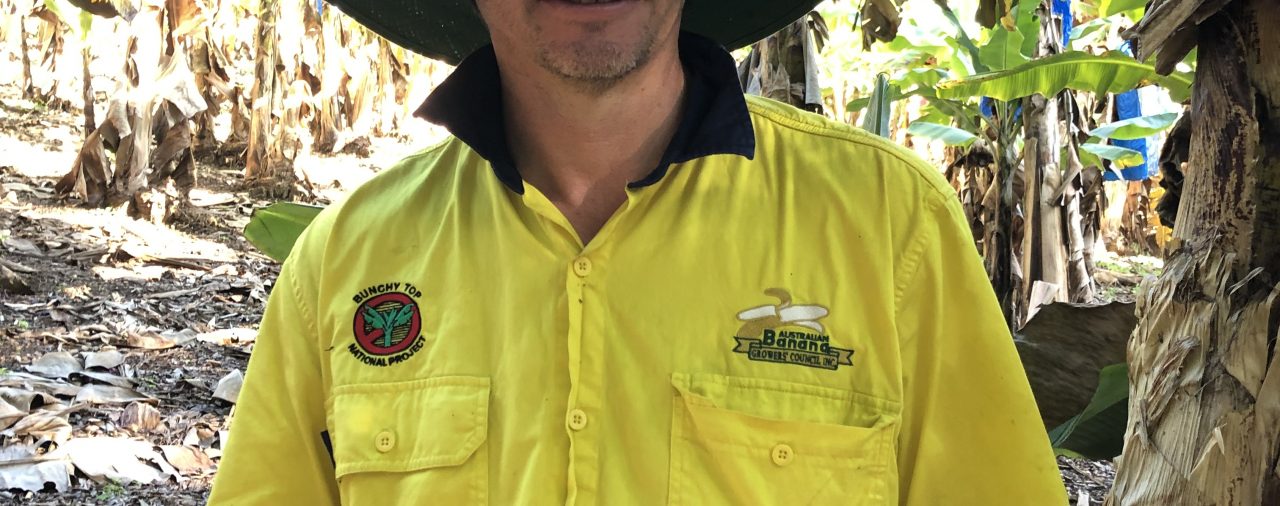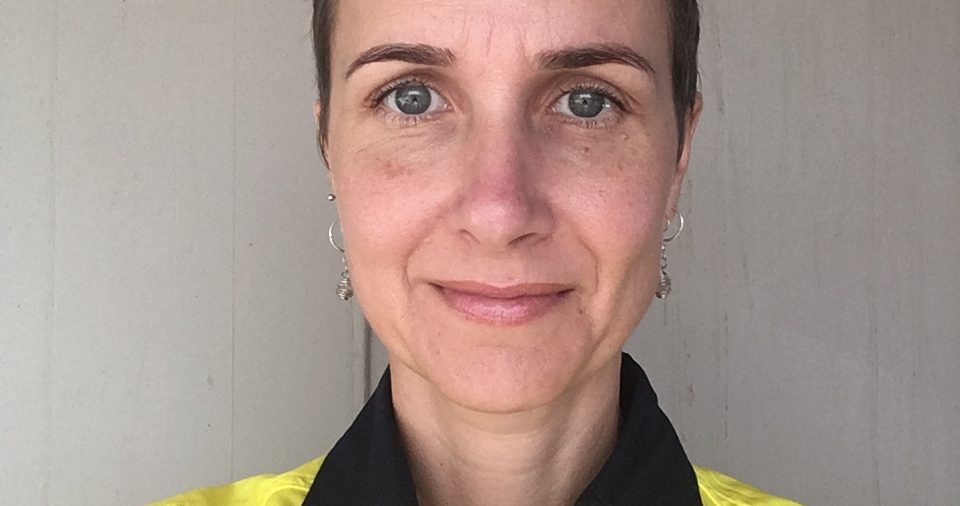Banana Bunchy Top is the most devastating virus disease worldwide for bananas.
The ABGC’s National Bunchy Top Project is working to contain the spread and minimise the number of infected plants in the containment zone which covers the Queensland Southern Biosecurity Zone (Cooroy to the NSW border) and NSW Banana Bunchy Top Virus Control Zone (Tweed, Lismore, Ballina and Byron Bay Local Government Areas from the Queensland border to Broadwater).
Bunchy Top is spread by aphids and does not contaminate the soil. There is no treatment that will cure an infected plant once it has Bunchy Top. It must be destroyed.
ABGC employs project manager David Peasley who manages a team of six casual bunchy top inspectors – three in northern NSW and one in southern Queensland and two recently appointed trainees.
“The key to controlling Bunchy Top is being able to detect the earliest stage of infection in the last one or two youngest leaves,” Mr Peasley said.
“Unless you can do that, the aphids that spread the virus, can transfer the virus to other plants. “Our specially trained inspectors are skilled in finding and destroying infected plants as soon as possible.
“To help growers find the more obvious symptoms we have just produced a Bunchy Top Growers Guide for the Packing Shed Wall with photos and descriptions of what to look for.
“We are also producing a guide for backyard growers on how to ‘Spot, Report, Verify and Destroy’ infected plants safely and effectively.
“Growers are also being encouraged to meet with the inspectors when they visit and get to recognise the symptoms, particularly the distinctive dot-dash dark lines along the leaf veins.
“The inspectors carry pocket sized magnifiers which are free to growers to help them see these symptoms.
“We encourage growers to take a more active role in helping us control Bunchy Top and appreciate the increasing effort some growers are taking to recognise the more obvious symptoms.”
Australian Bananas sat down with the team to find out about their experiences on the frontline.
GRANT EAST (NSW)
Inspecting for 24 years
Bunchy Top is hard to spot in the critical early stages. What strategy did you use to develop the skill of early identification of Bunchy Top?
Experience, time on the job and concentration.
What can growers do to help with Bunchy Top eradication?
Keep plantations free of weeds, rocks and any other rubbish that may be found in banana rows. If a plantation is not clean, it wrecks our concentration as we have to pick through weeds to look for Bunchy Top.
WAYNE SHOOBRIDGE (NSW)
Inspecting for 22 years
What do you enjoy the most about the job? How has the job changed over the years?
I enjoy the interaction with growers and the physical work. There’s less plantations now then back when I first started. One of the major things that has changed is the use of a GPS to mark the location of infected trees. You definitely need people on the ground to look for Bunchy Top. There are things a drone, for example, wouldn’t find as there is too much leaf over the top of the plant.
What can growers do to help with Bunchy Top eradication?
Keep bananas suckered and stripped. It’s important for growers to notify inspectors if they suspect they have Bunchy Top in their plantation and not wait for the inspectors to visit. If they find Bunchy Top, it has to be destroyed as soon as possible.
JOSHUA CHAPMAN (NSW)
Inspecting for 9 years
What do you enjoy the most about the job? How has the job changed over the years?
It is outdoor and keeps me fit. I enjoy providing a service to growers and industry. It is an important job. I still get satisfaction when I find Bunchy Top. We now use PDA units with GPS to accurately record the location of infected plants, the number of infected leaves and the destruction method. All the information is logged into our database immediately. We are always looking at better methods of controlling the spread of aphids.
What can growers do to help with Bunchy Top eradication?
Don’t chop them down. Don’t try to hide them. Let us know.
SAMANTHA STRINGER (QLD)
Inspecting for 10 years
How do you stay fit and how do you handle the humid summer conditions?
My 2-year-old keeps me fit and I like the heat and humidity.
What do you enjoy the most about the job? How has the job changed over the years?
Being outdoors and working independently. Less backyard inspections, less regulatory interaction, less regulations and less office work.
Do you have any tips for growers to help them spot Bunchy Top?
Dedicate some time, say half a day per month, to look for Bunchy Top. Don’t do other jobs at the same time. This will help focus your eyes on the symptoms.
What can growers do to help with Bunchy Top eradication?
Report what they see in their own plantation and in other backyards in their travels. Look for Bunchy Top themselves. Take an active role in detection and destruction. Assist inspectors with access on and off the property to ensure Panama disease is not spread. Take some responsibility and interest. It’s your industry.
New Trainees ANN PHILLIPS AND LACHLAN HOHNBERG
“We have had an excellent introduction to detecting Bunchy Top in our first few days on the job. Grant, Wayne and Josh were helpful in showing us the early symptoms and we both were able to find our first infected plants. It is hard to see in the early stage. “
The inspectors are employed on Hort Innovation project BA18000 Banana Bunchy Top Virus (Phase 4) National surveillance and education





